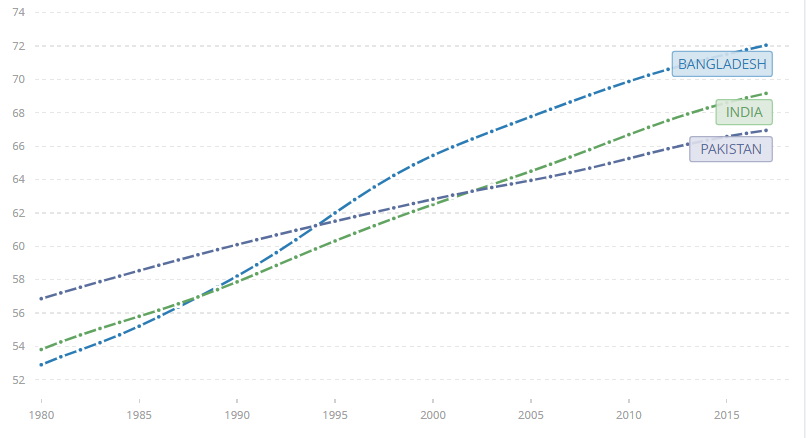The past three decades were blissful for the India’s growth numbers, but not for its developmental needs. Despite of being a democracy with the multi-party system, and free elections, it is far behind the authoritarian styled China. The elections in India are on ‘one person one vote’ basis, whereas in China the President is selected on the basis of internal negotiations in the Communist Party of China.
The hard truth here is that the China reduced the poverty,
gained literacy, improved infrastructure and worked amazingly on the other
welfare areas. The achievements of China is known by almost everyone in India.
The desire to be like China runs deep in the heart of every Indian. However no
one realizes the cost every Chinese citizen has paid for this, i.e. their basic
fundamental right. The liberty and freedom in China is visible with the recent
ongoing conflict in Hong-Kong.
The major reason why Indian’s policy makers get inspiration from China is because of their robust growth of the manufacturing sector. Whereas India has a service-centric growth model where the service sector has relatively low employability then the manufacturing sector. However, labour-centric growth, of China, could reduce the ‘unemployment’, by employing people, but is not stable due to low profitability.
This is a traditional economic model: first an economy is agricultural, and then move towards industrialization. This industrialization leads to the reduction of poverty, after this the service sector develops. In the Indian case industrial sector never received a chance to grow. This is mainly because of the attitudes of Indian leaders, who are just for showing growth numbers! Both at the state and the centre level, Indian leaders have no policy to push the industrial sector towards prosperity.
No doubt, India has a commendable record in reducing
poverty, especially since 1991 reforms. But
its inefficiency in securing its workers, ensuring healthcare, and promoting
other social security services, which every government must ensure, is
disappointing.
These days, Bangladesh’s economy is doing much better than China and India. Although the India and the China are still the ‘emerging giants’, whereas, Bangladesh is still small in front of these two. But the Growth numbers shows that Bangladesh have done very well in comparison to India and China. In per-capita terms also it is ahead of India.
The achievements made by Bangladesh in the current decade are astonishing. As Kaushik Basu writes “Still, in my view, Bangladesh’s economic transformation was driven in large part by social changes, starting with the empowerment of women.” The great work done by its ‘bank of poor’ (Grameen Banks), a microcredit institution, was also a transforming step in empowering the women. Today Bangladesh also has much higher life expectancy than India (see Figure)

The entire debate so far tells us that out of these three countries—India, Pakistan and Bangladesh— Bangladesh is doing very well. India has lessons to learn from Bangladesh.
Anurag Dhole is a seasoned journalist and content writer with a passion for delivering timely, accurate, and engaging stories. With over 8 years of experience in digital media, she covers a wide range of topics—from breaking news and politics to business insights and cultural trends. Jane's writing style blends clarity with depth, aiming to inform and inspire readers in a fast-paced media landscape. When she’s not chasing stories, she’s likely reading investigative features or exploring local cafés for her next writing spot.






